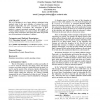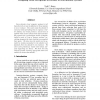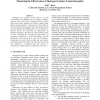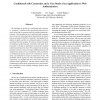7 search results - page 1 / 2 » Inconsistency in deception for defense |
NSPW
2006
ACM
13 years 10 months ago
2006
ACM
The use of deception is one of many defensive techniques being explored today. In the past, defenders of systems have used deception haphazardly, but now researchers are developin...
ACSAC
2004
IEEE
13 years 8 months ago
2004
IEEE
Since attackers trust computer systems to tell them the truth, it may be effective for those systems to lie or mislead. This could waste the attacker's resources while permit...
HICSS
2006
IEEE
13 years 10 months ago
2006
IEEE
Honeypots are computer systems that try to fool cyberattackers into thinking they are ordinary computer systems, when in fact they are designed solely to collect data about attack...
WISEC
2010
ACM
13 years 11 months ago
2010
ACM
We propose a novel trap-based architecture for enterprise networks that detects “silent” attackers who are eavesdropping network traffic. The primary contributions of our work...
SOUPS
2009
ACM
13 years 11 months ago
2009
ACM
We introduce the notion of a conditioned-safe ceremony. A “ceremony” is similar to the conventional notion of a protocol, except that a ceremony explicitly includes human part...




